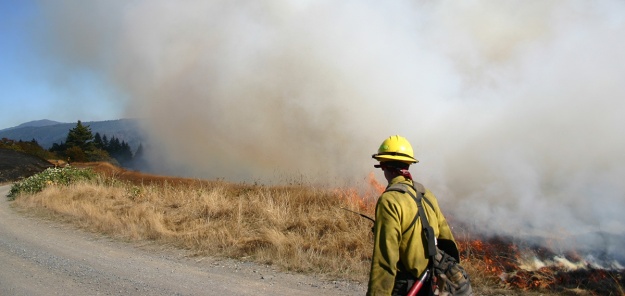
California wildfires are not only creating dangers for the areas in which they are burning, but are also creating health risks across the state due to widespread and lingering smoke.
Help protect the health of yourself and your loved ones with these important tips from the California Department of Public Health. Original content was created and published by CDPH and is available HERE.
Instructions for Those Most Adversely Affected by Smoke Inhalation
Young children, the elderly and those with lung or heart ailments are especially vulnerable in smoky conditions and should follow these guidelines:
- Individuals with lung or heart disease should make sure that they are on their medication and have at least a five-day supply on hand.
- Individuals with asthma should consult their physician about an asthma management plan and stick to it during the unusually smoky conditions.
How to Tell if Smoke is Affecting You
- Smoke can cause:
- Coughing.
- Scratchy throat.
- Irritated sinuses.
- Shortness of breath.
- Chest pain.
- Headaches.
- Stinging eyes.
- Runny nose.
If You Have Heart Disease, Lung Disease or a Pre-Existing Respiratory Condition, Smoke Might Make Your Symptoms Worse
- People who have heart disease might experience:
- Inability to breathe normally.
- Cough with or without mucus.
- Chest discomfort.
- Wheezing and shortness of breath.
- Even healthy people may experience some of these symptoms in smoky conditions.
Protect your health:
- Pay attention to local air quality reports. Listen and watch for news or health warnings about smoke.
- If you are advised to stay indoors, keep indoor air as clean as possible. Keep windows and doors closed unless it is extremely hot outside. Run an air conditioner if you have one, but keep the fresh-air intake closed and the filter clean to prevent outdoor smoke from getting inside. If you do not have an air conditioner and it is too warm to stay inside with the windows closed, seek shelter elsewhere.
- Use a high-efficiency particulate air (HEPA) filter to reduce breathing problems. Room air cleaners, which utilize a HEPA filter, may reduce the number of irritating fine particles in indoor air.
Do not add to indoor pollution. When smoke levels are high, do not use anything that burns, such as candles, fireplaces or gas stoves. Do not vacuum because it stirs up particles already inside your home. Do not smoke because smoking puts even more pollution into the air.
Masks
Most dust masks are not effective in reducing smoke exposure during a wildfire because they are not designed to filter very small particles and do not fit well enough to provide an airtight seal around the wearer’s mouth and nose.
- Surgical masks that trap small particles are designed to filter air coming out of the wearer’s mouth and do not provide a good seal to prevent inhalation of small particles or gases in smoke.
- Inexpensive paper “comfort” or “dust” masks commonly found at hardware stores are designed to trap large particles and do not provide enough protection for your lungs.
- Mask use may give the wearer a false sense of security, which might encourage too much physical activity and time spent outdoors. Also, wearing a mask may actually be harmful to some people with heart or lung disease because it can make the lungs work harder to breathe.
Many types of masks cannot effectively filter out small smoke particles. They can however, provide some protection from the larger smoke particles that can become airborne when sweeping up soot or ash during cleanup activities. Some types of masks can also filter out up to 95% of small smoke particles. These masks are marked with one of the following: “P95,” “R95” or “N95”, and tend to be more expensive than ordinary dust masks. Other masks with higher ratings (marked “P100,” “R100” or “N100”) can filter out even more particles. If properly fit to the wearer’s face, such masks can provide significant protection against particles in smoke. Without a good seal around the wearer’s mouth and nose, even these masks will not be effective. Also, they do not protect against irritating gases in smoke.
If You’re Sure You Have Time, Take Steps to Protect Your Home
Inside
- Close windows, vents, doors, venetian blinds and heavy drapes. Remove lightweight curtains.
- Shut off gas at the meter. Turn off pilot lights.
- Open the fireplace damper. Close fireplace screens.
- Move flammable furniture into the center of the home away from windows and sliding-glass doors.
- Turn on a light in each room to increase the visibility of your home in heavy smoke.
Outside
- Seal attic and ground vents with pre-cut plywood or commercial seals.
- Turn off propane tanks.
- Place patio furniture inside.
- Connect the garden hose to outside taps.
- Set up the portable gasoline-powered pump.
- Place lawn sprinklers on the roof and near above-ground fuel tanks. Wet the roof.
- Wet or remove shrubs within 15 feet of your home.
- Gather fire tools.
You can also find additional information on how to reduce risks to health and safety and prepare for wildfire at http://www.readyforwildfire.org/.

